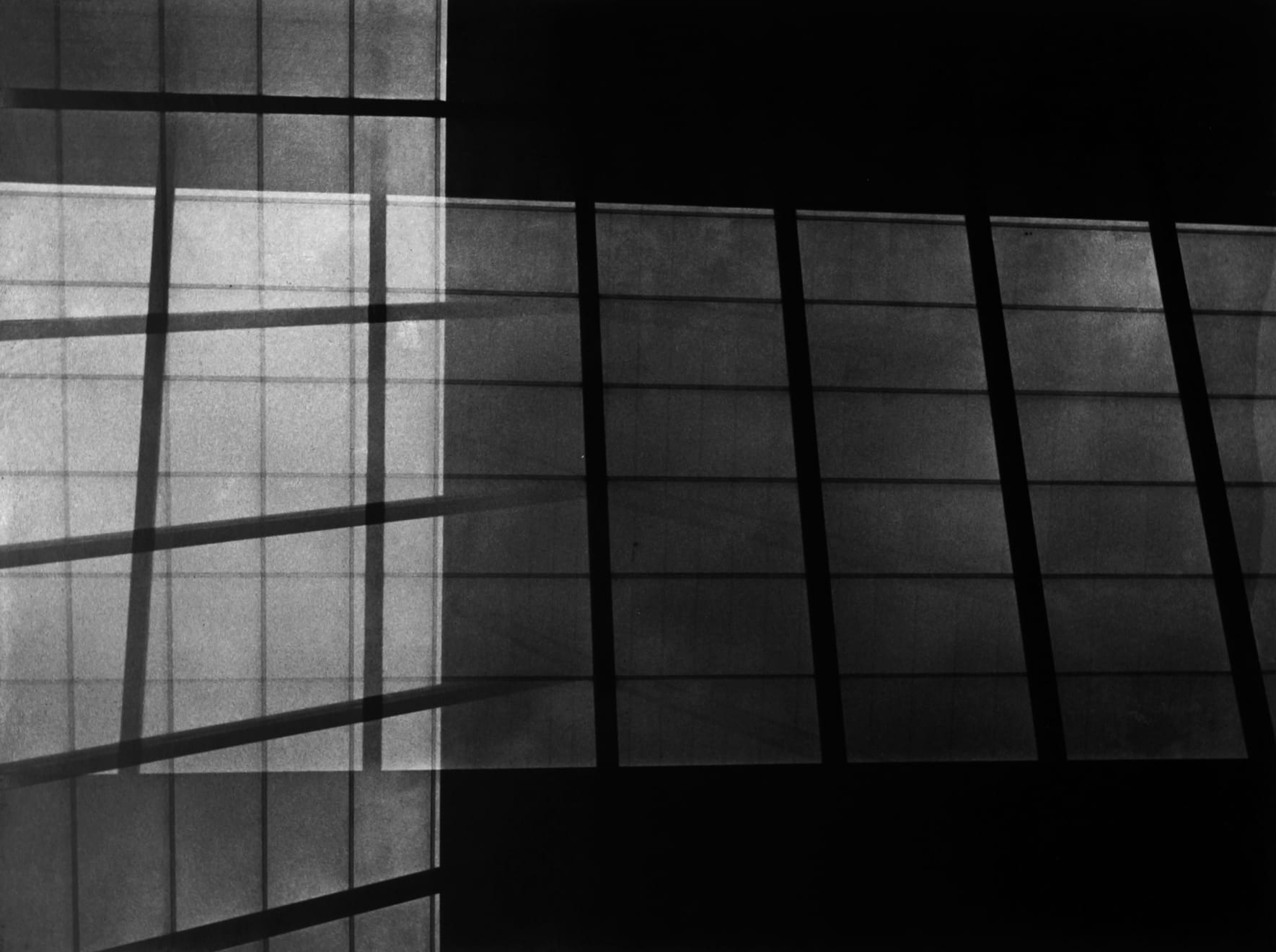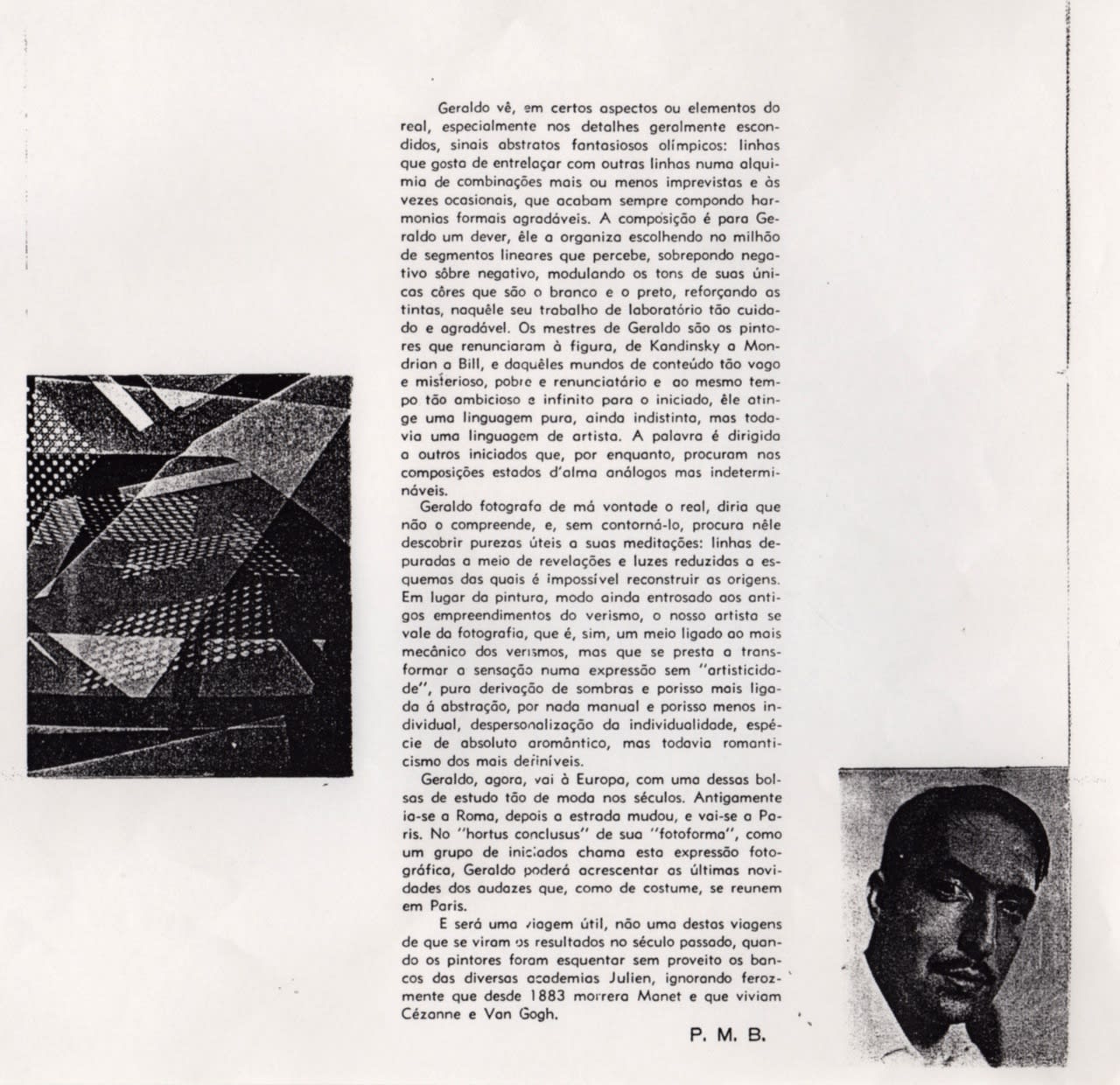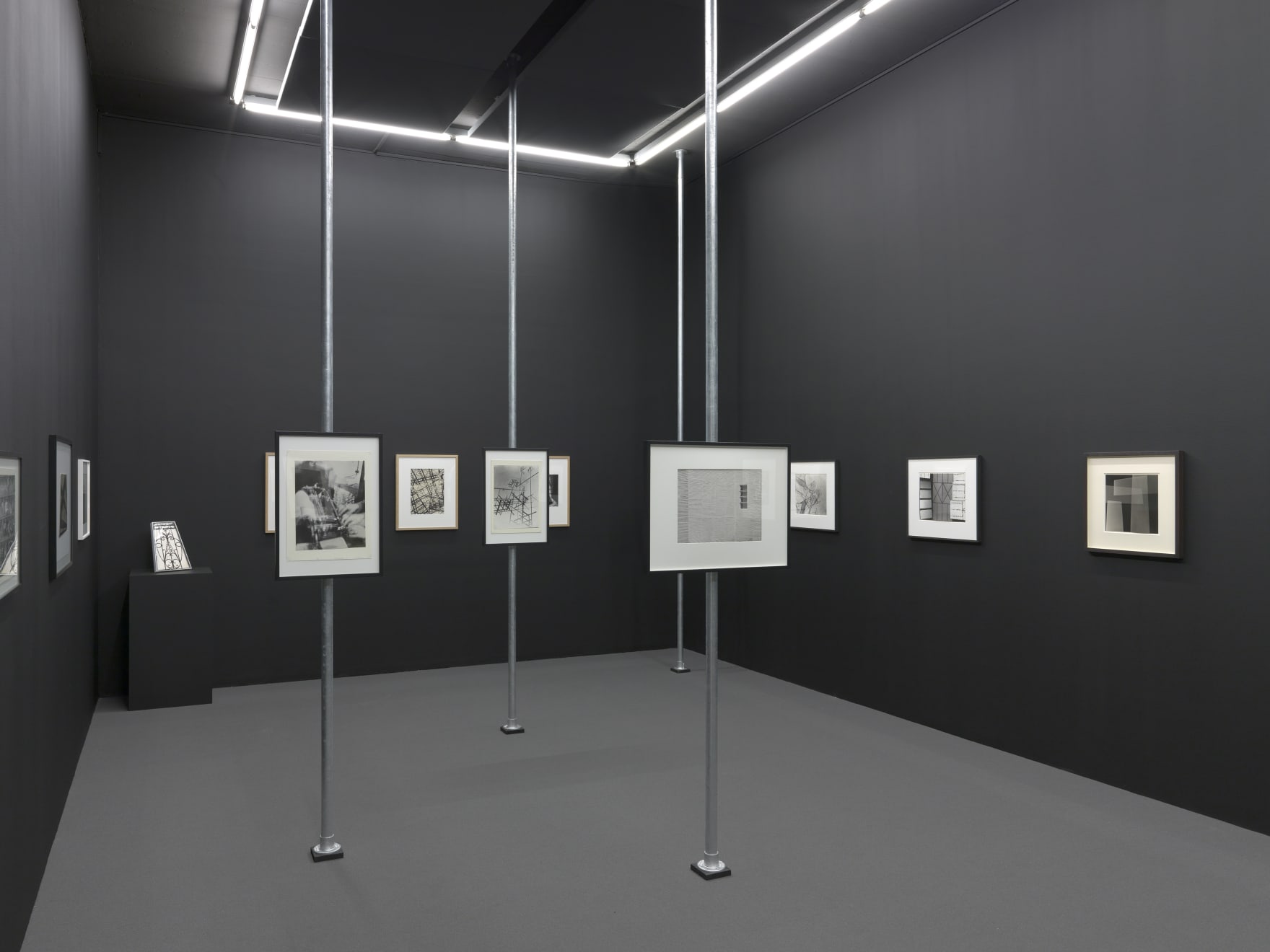-
Obras
Open a larger version of the following image in a popup:
texto escrito por Pedro M. Bardi para exposição de Geraldo de Barros no Museu de Arte de São Paulo, 1949
text written by Pedro M. Bardi para exposição de Geraldo de Barros at Museu de Arte de São Paulo, 1949
Open a larger version of the following image in a popup:
Geraldo de Barros, Musée d’Art Moderne et Contemporain Geneve, Genebra, Suíça, 2022©Annik Wetter.
Geraldo de Barros
Fotoforma, São Paulo, Brasil, 1949/1977superposição de imagens no fotograma, gelatina e prata sobre papel
multiple-exposure on the negative, gelatin silver print on paper29,5 x 40 cm
11.61 x 15.75 ined vintageFurther images
Geraldo de Barros is a key name of 20th-century Brazilian art. Combining his first studies on painting with a later interest in photography, he pushed the envelope of the traditional photographic processes, questioning the classic rules of composition. Geraldo de Barros took a formal concern – as clearly seen in Brazilian concretism, in which participated intensely – and managed to merge this with his social concerns, leading him to approach the industrial processes in his work, dealing coherently with geometric constructions, reproducibility, the socialization of art, the theory of form and industrial design.In the 1940s, photography and its processes underwent a profound transformation, with young photographers from the Foto Cine Clube Bandeirante photography club in São Paulo leading the way. Among them, Geraldo de Barros stood out by seeing photography no longer as an end but as a means. His Fotoformas series, conceived through experimentation in abstraction and constructivism, provided the title for the first exhibition of modern photography in Brazil (1951, MASP) and opened doors to positioning photography among the visual arts in this country. In creating this series, he manipulated photographic negatives, used masks or other objects to block or filter light during enlargement, experimented with exposure times, etc. The diptych A menina do sapato provides insight into his process, as the original photograph can be compared to the end result of the artist’s manipulation.
Ainda na década 1940, a fotografia e seus processos sofreram uma profunda transformação, da qual jovens fotógrafos do Foto Cine Clube Bandeirante, em São Paulo, foram os grandes protagonistas. Dentre eles, destacou-se Geraldo de Barros, que via a fotografia não mais como o fim, mas como o meio. Sua série “Fotoformas”, concebida a partir do experimentalismo em abstração e construtivismo, deu nome à primeira exposição de fotografia moderna no Brasil (1951, MASP) e abriu as portas para posicionar a prática da fotografia entre as artes visuais. Para tanto, ele manipulava os negativos fotográficos, utilizava máscaras ou outros objetos para bloquear ou filtrar luz durante a ampliação, brincada com os tempos de exposição à luz, etc. O díptico “A menina do sapato” é um ótimo exemplo para identificar a fotografia original e a manipulada pelo artista.





